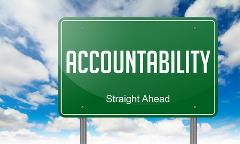S&P Held Accountable For Their Role in the Global Financial Crisis

(Part 2 of a 2-part series discussing S&P’s liability for deceptive rating practices and resulting penalties.)
As discussed in Part 1 of this series, our parent company IMF Bentham provided litigation funding for a case in Australia against Standard & Poor’s Financial Services LLC (“S&P”) and ABN Amro, which resulted in an approx. $30M judgment. This was the first case in the world to go to trial and find a ratings agency liable for how it rated derivatives. The Australian S&P/ABN Amro suit paved the way for the U.S. Department of Justice (“DOJ”), various States, the California Public Employees’ Retirement System (“CalPERS”), and the US Securities and Exchange Commission (“SEC”) to bring charges against S&P for their contribution to the global financial crisis, which resulted in the recent flurry of landmark settlements in the United States involving a major rating agency.
This is a brief summary of recent settlements involving ratings agencies in the US.
$1.375B US DOJ/various States Settlement
The DOJ, along with 19 States and the District of Columbia, entered into a $1.375B settlement with S&P and its parent corporation, McGraw Hill Financial Inc. (“McGraw”) to resolve allegations that it issued good grades from 2004 to 2007 on financial products known as Residential Mortgage-Backed Securities (“RMBS”) and Collateralized Debt Obligations (“CDOs”) when in fact those grades were inflated and distorted the real credit risks involved. The lawsuit further alleged that S&P misled investors by stating its ratings were objective and uninfluenced by their Wall Street relationships when in reality, S&P’s actions were tainted by their greed to increase their own profits.
U.S. Attorney General Eric Holder stated that “as S&P admits under this settlement, company executives complained that (S&P) declined to downgrade underperforming assets because it was worried that doing so would hurt the company’s business. While this strategy may have helped S&P avoid disappointing its clients, it did major harm to the larger economy, contributing to the worst financial crisis since the Great Depression.” This record settlement will distribute $687.5M to the DOJ with the remainder to be disbursed among the 19 State complainants and the District of Columbia.
The S&P settlement foreshadows a resolution likely to come from the DOJ’s investigation into another rating agency, Moody’s Investors Service (“Moody’s”). Moody’s is being investigated for its pre-financial crisis ratings of CDOs.
$125M CalPERS Settlement
America’s largest pension fund, CalPERS, also reached a $125M settlement with S&P for losses sustained by CalPers due to S&P’s inflated grades assigned to various structured investment instruments that collapsed during the 2007-2008 mortgage crisis. CalPERS also filed suit against rating agencies Fitch Ratings (“Fitch”) and Moody’s. CalPers has since settled with Fitch, but its case against Moody’s is ongoing.
$77M SEC Settlement and 1-Year Suspension
In the first enforcement action by the SEC since it obtained the authority to file charges against a rating agency under the 2010 Dodd-Frank Wall Street Reform and Consumer Protection Act, the SEC brought three charges against S&P in January 2015 for their actions relating to the ratings of a number of commercial mortgage-backed securities (“CMBS”) during the post-2011 financial crisis, which resulted in a $58M settlement. In addition, a $12M and $7M settlement with the New York and Massachusetts attorneys general, respectively, for matters that were concurrently brought with the S&P charges was also reached.
Essentially, the S&P engaged in a multitude of transgressions relating to the CMBS’. The S&P misled investors by stating it used one form of rating methodology when it in fact used another, issued a 2012 publication stating that its new rating criteria could endure Great-Depression levels of economic stress, and failed to properly monitor prior rated mortgage-backed securities from October 2012 to June 2014.
Director of the SEC Enforcement Division Andrew J. Ceresney stated that “(i)nvestors rely on credit rating agencies like (S&P’s) to play it straight when rating complex securities like CMBS….(b)ut S&P elevated its own financial interests above investors by loosening its rating criteria to obtain business and then obscuring these changes from investors.” Although S&P neither admitted nor denied wrongdoing in reaching settlement, it further agreed to enter into a 1-year suspension on rating conduit CMBS’.
While the S&P settlements are the first step in holding rating agencies accountable for their contribution to the pre and post global financial crisis, critics of these resolutions are disappointed that the DOJ, CalPers and the SEC failed to hold anyone individually responsible for the misconduct. Perhaps the S&P and its rating agency cohorts have learned their lesson by feeling the sting of the hefty fines assessed against them, but without individual punishment, the history of the financial crisis may be doomed to repeat itself.